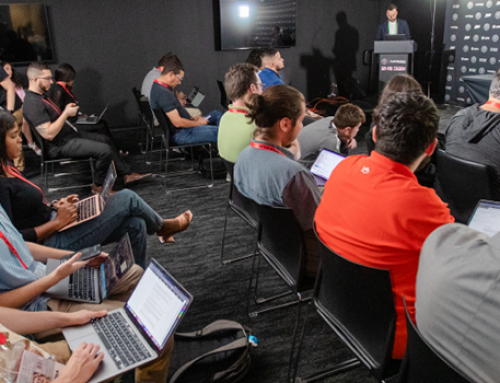The Media Management Association gathered for its first meeting on September 7, 2016 to hear the presentation of Shlomi Ron, an advocate for the art of “visual storytelling,” a new concept that helps brands connect effectively with their target audience.
“Visual storytelling” is defined by Scott Brinker as “the act of communicating ideas through the use of narrative elements with the purpose of educating, entertaining, or influencing others.” Ron recently co-founded the Visual Storytelling Institute, which he described as a “think tank” that helps companies blend the art of storytelling with visuals that will resonate with their customers. Ron has more than 10 years of experience in digital marketing and has worked with such brands as IBM, Nokia, and American Express.
Ron’s presentation followed the same structure as all stories do, with three major components: setup, conflict, and resolution. He began by describing today’s complex digital world, overwhelmed by an increasing number of channels of communication and a new multi-directional communication path between marketers and consumers, made possible by social media.
However, simultaneously, content production and consumption has dramatically increased. Ron noted that, with so much content available, the human attention span is decreasing, now averaging eight seconds or one second less than that of a goldfish. Due to this trend, businesses are struggling to have their voices heard, regardless of the benefits of social media.
Ron advocated the practice of visual storytelling to combat this problem and bridge the gap between businesses and consumers by using engaging videos. Visual storytelling includes two main benefits: visual superiority and storytelling superiority. First, visual images are processed 60,000 times faster by the human brain than text, and 90% of information processed by the brain is visual information. Second, according to neural coupling, when a story resonates with both a speaker and a listener, their respective brain activities are identical.
In the past, companies often relied on the concept of “inadequacy marketing,” in which they tried to scare consumers into buying a product. Today, Ron argued in favor of “empowerment marketing,” which is accomplished by placing the customer as the “hero,” rather than the company itself, and focusing on emotions so that the audience can relate to a brand on a personal level. If accomplished successfully, empowerment marketing will lead the audience to share that story with other consumers so that, ultimately, both parties will become storytellers. Ron concluded that, no matter how technology evolves over time, a good story will always win.






